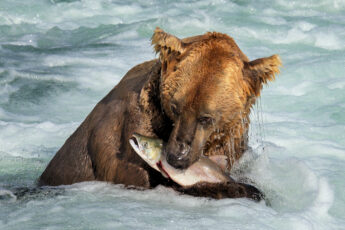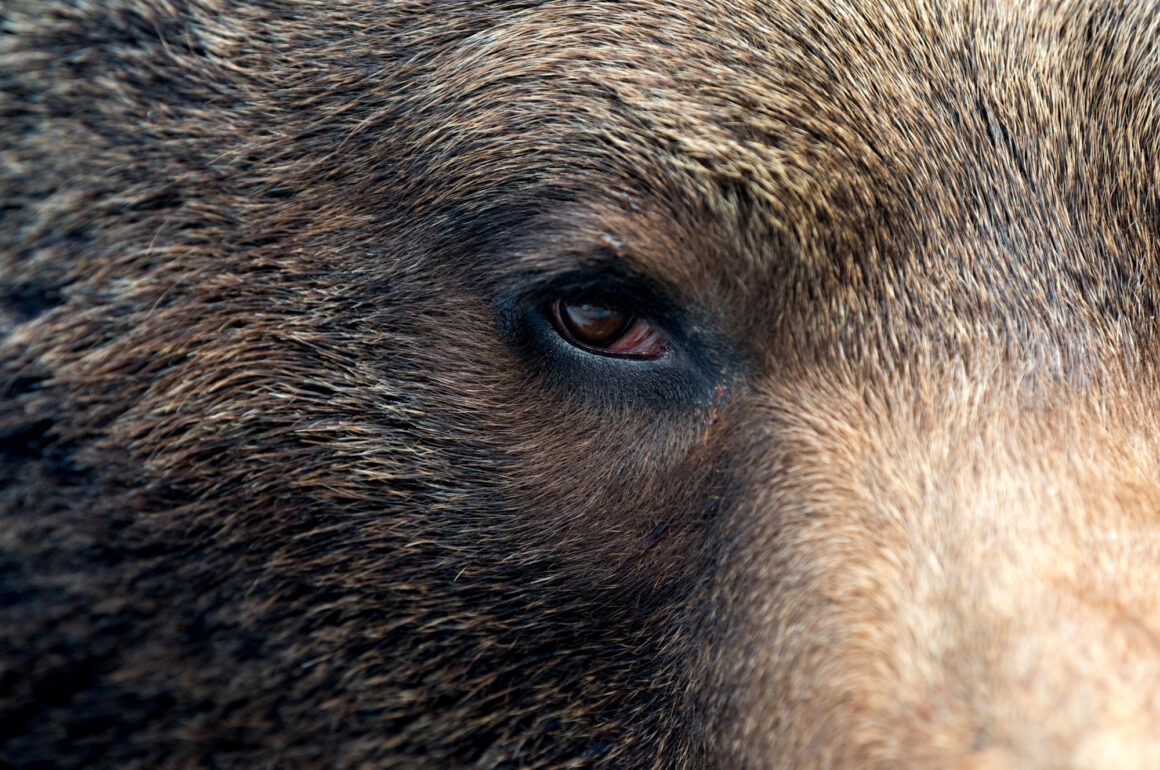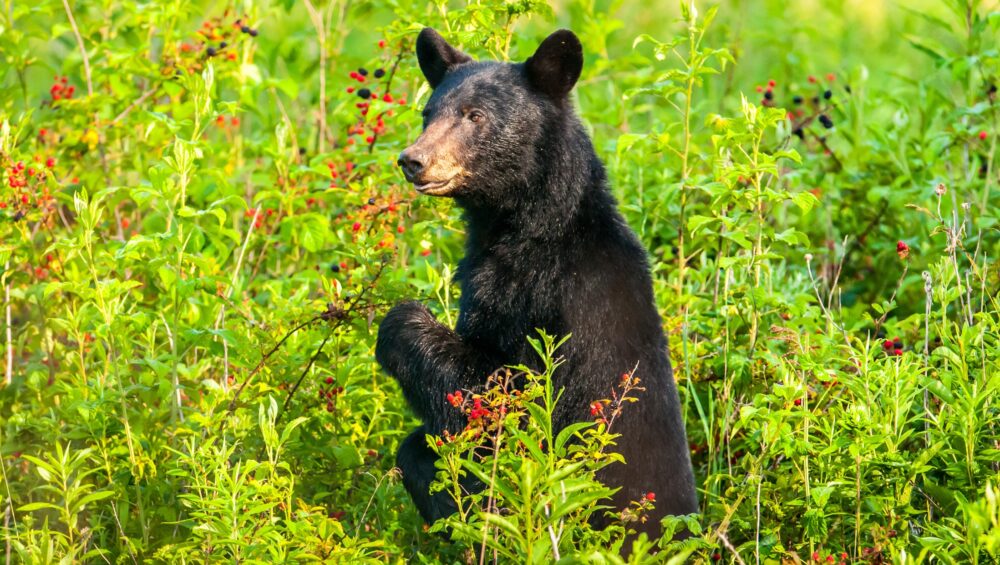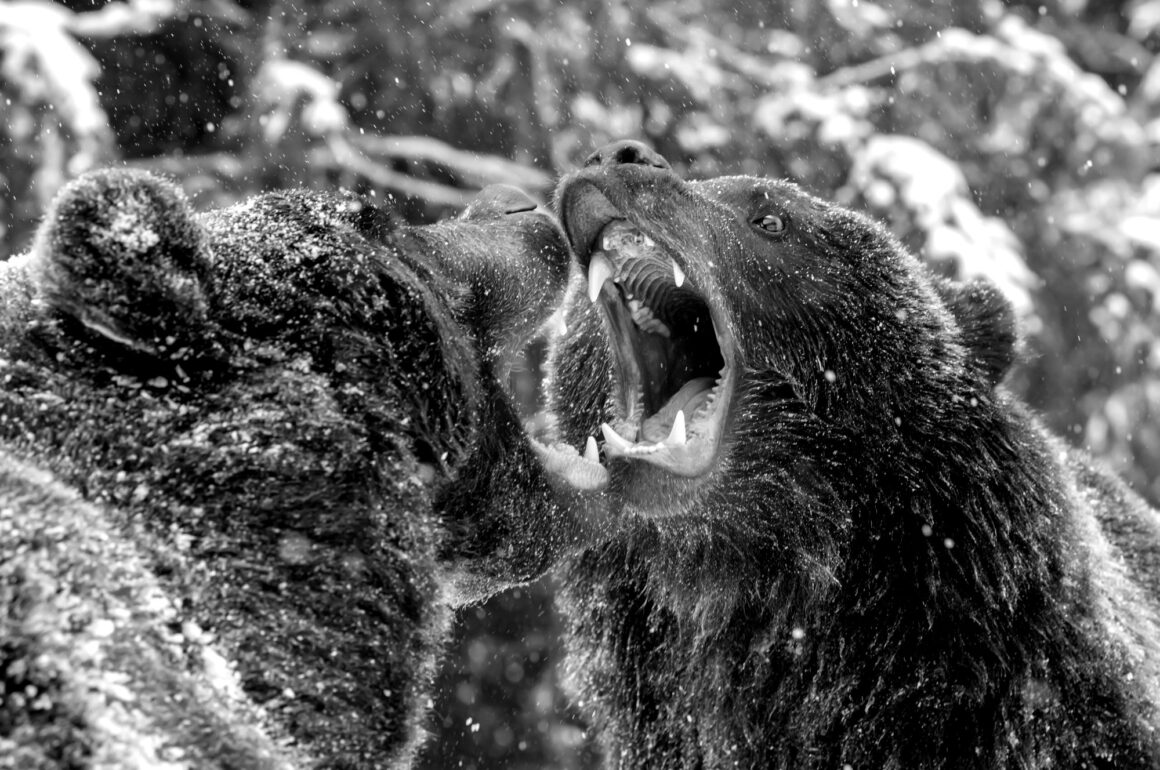HOW MANY BEAR SPECIES ARE THERE?
How many distinct bear species are there?
The World’s Eight (8) Bear Species
1- North American Black Bear (Ursus Americanus): Kermode or Spirit bear, colors: black, bluish-black, brown, and white. The most prevalent bear in North America is the North American Black Bear, which may be found from Florida north through Canada and up to Alaska. It is typical for black bears to go through a black and brown-color phase. Northwestern British Columbia, Canada, is where the white color phase is more uncommon to appear. The black bear eats everything. Their diet consists primarily of plant materials. About 8 years old is when males achieve their adult size. In the boreal forest parts of Ontario, females mate and give birth to cubs from 5 to 7 years of age, and at 8 years and older. Males may weigh up to 280 kg (600 lbs), and sometimes even more. In the wild, black bears can live up to 25 years. Although older bears have been seen, human activity (hunting) prevents the bulk of bears from living beyond old age.
2- Ursus Arctos, the brown bear many subspecies. Alaska, western Canada, and portions of Washington, Montana, and Wyoming are all home to brown bears. Small individual populations can be found all across Asia and portions of Europe. Brown bears are presently seen in good numbers in Russia. Brown bears can be almost-black, brown, or extremely light brown or blonde in hue. Size varies significantly based on region and the availability of food in general. The biggest bears, known as “Big Browns,” can reach sizes that are comparable to Polar Bears off the coasts of Alaska and Russia. The inner bears of Europe’s highlands and the North American Rocky highlands (Grizzly Bears) are often significantly smaller. Bears that weigh 1500 pounds (700 kilograms) or more are currently extremely rare.
3- Ursus maritimus, polar bear The polar bear is the biggest living bear species. Males of reproductive age might potentially weigh up to 1760 kilograms (kg) (or 800 kg). The heaviest black bear ever recorded in Ontario weighed in at 654 kilograms (1439 pounds) and was captured as part of a “live capture” study. Male polar bears in Ontario often weigh in at around 500 kg (1100 lbs). Female adult bears seldom surpass 400 kilograms (880 pounds) at their heaviest. Their typical weight is closer to 300 kilograms (660 pounds).
4- Ursus thibetanus, also known as the Asian black bear, the Himalayan black bear, and the moon bear. In addition to their lengthy black fur, Asiatic black bears typically have a white crescent-shaped patch on their chest. Long hairs surround the neck and shoulders, and the ears are rather huge. The range of the Asiatic black bear includes much of eastern Asia. You can find these bears in countries like Afghanistan, Bangladesh, Bhutan, Cambodia, China, India, the Islamic Republic of Iran, Japan, the Democratic People’s Republic of Korea, Laos, Malaysia, Myanmar, Nepal, Pakistan, the Russian Federation, Taiwan, and Vietnam. Although meat makes up a very modest percentage of an Asian black bear’s diet, this species is more carnivorous than its American cousin., but both species are omnivores. Animal corpses, tiny mammals, birds, fish, and mollusks all fall under this category. Along with grass, berries, fruits, seeds, honey, and insects, their diet also includes meat. They stock up for the cold season by eating nuts in the fall. They go into hibernation in the winter. They do not hibernate in the south.
5- Spectacled Bear (Andean Bear) For the most part, scientists call spectacled bears “Andean bears.” since they can only be found in South America’s Andes highlands. It is forbidden to kill bears since they are an endangered species with a Vulnerable status. The Florida spectacled bear, short-faced bears from the Middle to Late ice age, and other short-faced bears are all extinct save for the Andean bear (subfamily Tremarctinae), which is the closest surviving cousin. The only remaining bear species that is endemic to South America is the spectacled bear, which is also the sole surviving member of the subfamily Tremarctinae. Although just 5% of the Spectacled Bear’s diet consists of meat, it is the greatest terrestrial carnivore on that continent. The jaguar is the biggest obligate carnivore in South America. Only the Baird’s and South American Tapirs are heavier than this species among South America’s living native land mammals. A medium-sized species of bear, the spectacled bear.
Although bears can range in color from jet black to dark brown and even a reddish tint, on the whole, their fur is a blackish tone. Although not all Spectacled bears have the markings associated with spectacles, the species is frequently recognized by distinctive beige-colored patterns on its face and upper chest. Each individual bear’s pattern and degree of pale markings vary slightly, making bears easily distinguishable. Males may weigh twice as much as females and have dimensions that are a third greater. Males may weigh up to 200 kilograms (440 lb) and females up to 35 kilograms (77 lb), respectively. With a tail length of only 7 cm (2.8 in), the length may vary from 120 to 200 cm (47–79 in), and the shoulder height can vary from 60 to 90 cm (24–30 in). This kind of bear has a more rounded face than other bears and a comparatively short, wide nose. Despite the present Spectacled bears’ predilection for a herbivorous diet, this face feature has been suggested to be an adaptation to a predominantly carnivorous diet in certain ancient species of the Tremarctinae subfamily.
6-Panda Bear, Ailuropoda melanoleuca 5 ft (1.5 m) in length (with a 6 in. (.2 m) tail). Males often weigh 250 lbs (113 kg), whereas females typically weigh 220 lbs (100 kg). The giant panda is a threatened, elusive, and rare bear. The giant panda was once thought to belong to the raccoon family by science. Science was incorrect, as demonstrated by DNA studies. There is no connection between the huge and red pandas. Giant pandas are well known for their adoration of bamboo, a food source with such poor nutritional value that the pandas must devour up to 20 kilograms per day. The panda’s hand has an additional finger that makes it easier for them to tear bamboo, and its gut is protected from splinters by a thick layer of mucus. The biggest factor contributing to the giant panda’s decline is habitat degradation, and as a result, its range has been reduced to six different mountain ranges in western China. A giant panda is 1/900th the size of its mother at birth, pink, hairless, and blind. Giant pandas do not hibernate like other bears. They relocate to lower altitudes in the winter to remain warm and to higher altitudes in the summer to stay cool. Any time of day or night, they may be active.
7-Sloth bear-Ursus Melursus -Indian and Sri Lankan sloth bears are the two subspecies. 140–190 cm in length, 80–140 weight for males, and 55–95 kg for females. From a great distance, one can hear these bears with shaggy hair sucking on insects. Sloth bears have long, shaggy, black hair with a white U- or Y-shaped marking on their breast. Because they are stocky, they are able to scale trees and forage for termites thanks to their well-developed hook-like claws. They also have wide lips, a lengthy tongue, and a pale snout. Sri Lanka, India, Bhutan, Nepal, and Bangladesh are home to sloth bears. The nocturnal sloth bear lives in home ranges that it appears they are content to share with other sloth bears. An average male sloth bear’s territory is 13 square kilometers. This is far smaller than most other bears, perhaps as a result of the fact that they do not experience seasonal variations in the availability of food (ants and termites) that remain there all year. Since ants and termites are always available, they don’t have to hibernate during the colder months.
8-Sun Bear. Ursus malayanus, the Sun BearBody weight ranges from 27 and 65 kg for males and 27 to 50 kg for females. They are the tiniest bear species. Sun bears have short, water-repellent hair that is black or dark brown with a yellow crescent on their breast. Strong paws with exposed soles and large sickle-shaped claws are on their hands. Their large tongues and flexible snouts are adaptations for removing termites from nests. They have the biggest canines of any bear species relative to their size. Sun bears are not extremely carnivorous, yet their canine teeth are designed for shredding flesh. They could rip through trees to get at insects or use their razor-sharp teeth as weapons. Southeast Asia is where sun bears may be found, including Brunei Darussalam, Cambodia, China, India, Indonesia, Lao PDR, Malaysia, Myanmar, Thailand, and Vietnam.







Although I enjoy your website, you should proofread a few of your pieces. Many of them have serious spelling errors, which makes it difficult for me to convey the truth. Nevertheless, I will definitely return.
Nice blog here Also your site loads up very fast What host are you using Can I get your affiliate link to your host I wish my site loaded up as quickly as yours lol
Your article helped me a lot, is there any more related content? Thanks!
Thank you for your sharing. I am worried that I lack creative ideas. It is your article that makes me full of hope. Thank you. But, I have a question, can you help me?
Can you be more specific about the content of your article? After reading it, I still have some doubts. Hope you can help me.
Your point of view caught my eye and was very interesting. Thanks. I have a question for you.
Can you be more specific about the content of your article? After reading it, I still have some doubts. Hope you can help me.
Your article helped me a lot, is there any more related content? Thanks!
Your point of view caught my eye and was very interesting. Thanks. I have a question for you.
Your article helped me a lot, is there any more related content? Thanks!
Your article helped me a lot, is there any more related content? Thanks!
Thanks for sharing. I read many of your blog posts, cool, your blog is very good.
Can you be more specific about the content of your article? After reading it, I still have some doubts. Hope you can help me.
Your point of view caught my eye and was very interesting. Thanks. I have a question for you.
Wow, superb weblog layout! How long have you ever been blogging for?
you make running a blog glance easy. The full look of your web site is
fantastic, as smartly as the content material! You can see similar
here sklep internetowy
Thank you for your sharing. I am worried that I lack creative ideas. It is your article that makes me full of hope. Thank you. But, I have a question, can you help me?
Thank you for your sharing. I am worried that I lack creative ideas. It is your article that makes me full of hope. Thank you. But, I have a question, can you help me?
Can you be more specific about the content of your article? After reading it, I still have some doubts. Hope you can help me.
Your article helped me a lot, is there any more related content? Thanks!
I am often to blogging and i really appreciate your content. The article has really peaks my interest. I am going to bookmark your site and keep checking for new information.
Thank you for your sharing. I am worried that I lack creative ideas. It is your article that makes me full of hope. Thank you. But, I have a question, can you help me?
I don’t think the title of your article matches the content lol. Just kidding, mainly because I had some doubts after reading the article.